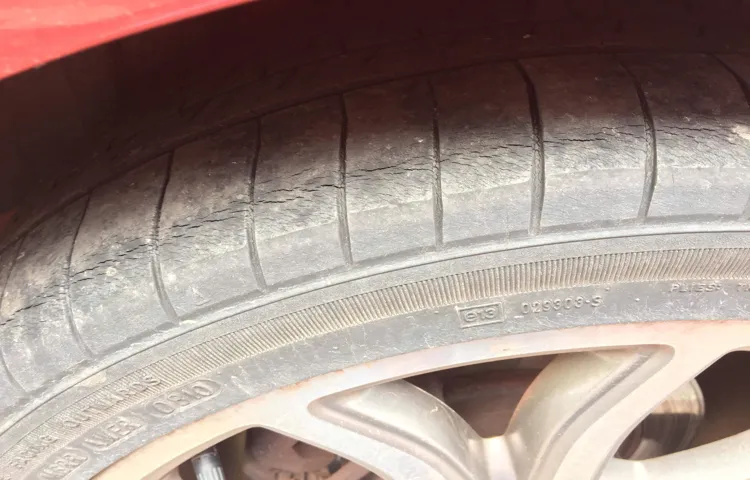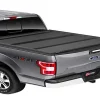Have you ever heard a strange, scraping noise coming from your tires when you turn? Or noticed some worn marks on your wheel well? Chances are you are experiencing tire rub. But how much is too much? Tire rub is a common issue, particularly with larger aftermarket tires and wheels, but it can be a dangerous problem that you don’t want to ignore. In this blog post, we’ll dive into what tire rub is, how it happens and how to determine if it’s a problem you can continue to drive with or if you need to take action to prevent further damage to your vehicle.
Table of Contents
Understanding Tire Rub
Tire rub can be a frequent occurrence, especially for car enthusiasts who opt for larger wheels and tires. However, it’s important to know when the tire rub is too much. Simply put, tire rub refers to the contact between the tire and any part of the car, often the wheel well.
In some cases, tire rub can cause damage to the tire, wheel, or suspension components. But, how much tire rub is too much? It’s a tricky question since it depends on various factors, such as the amount of suspension travel, tire size, and wheel offset. Generally, a small amount of tire rub under hard cornering or heavy loads is acceptable, but excessive rubbing can lead to serious issues.
Therefore, it’s essential to keep an eye on the tire rub and seek professional advice if necessary to avoid any unwanted damage.
What is tire rub?
Tire rub occurs when the tire of your vehicle comes in contact with another part of your car, such as the wheel well or suspension components. This creates friction as the tire spins and can cause damage to both the tire and the car’s exterior. It is often accompanied by a noticeable noise, such as a scraping or rubbing sound.
Tire rub can occur for a variety of reasons, including oversized or incorrectly fitted tires, suspension modifications, or worn-out suspension components. Checking your tire and suspension components regularly can help prevent tire rub and ensure your safety on the road. If you suspect tire rub, it is essential to have your vehicle inspected by a professional to prevent further damage to your car and ensure that you maintain proper tire alignment and safety.
Why does tire rub happen?
Tire rub happens when your tire rubs against another part of your vehicle. This can occur for a variety of reasons, including worn-out parts, incorrect tire size, or uneven suspension. When your tire rubs against a part of your vehicle, it creates friction and can cause damage to both the tire and the car.
This can lead to a decrease in performance, decreased fuel efficiency, and even safety hazards. The best way to prevent tire rub is to ensure that you have the correct tire size for your vehicle, maintain proper tire pressure, and keep your suspension and other parts up-to-date. By doing these things, you’ll be able to keep your vehicle running smoothly and safely, and avoid any unnecessary tire rub.
How much tire rub is normal?
Tire rub can happen to any vehicle when the tires come into contact with the wheel wells. But how much tire rub is normal? Well, it depends on the type of vehicle and the tire size. Some vehicles have more generous wheel wells that provide more room for the tires to move around, while others have tighter wheel wells that can lead to more rubbing.
Additionally, larger tires may also rub more than smaller ones, especially if they are wider or have a more aggressive tread pattern. However, excessive tire rub can lead to damage to the tires, wheels, and suspension components, so it’s important to keep an eye out for any signs of excessive rubbing. If your tires are rubbing too much, you may need to adjust your suspension or consider installing smaller tires.
So, if you’re experiencing tire rub, don’t ignore it – take action to prevent further damage to your vehicle.
Dangers of Excessive Tire Rub
When it comes to tire rub, it’s essential to know how much is too much. While some tire rub may be expected during aggressive driving or off-road adventures, excessive tire rub can be dangerous. Not only can it cause damage to your tires and suspension system, but it can also compromise your vehicle’s handling and stability.
Excessive tire rub can also create clearance issues and increase the risk of tire blowouts. It’s best to track your tire rub and stay within safe levels to avoid potential dangers. If you’re unsure how much tire rub is safe for your vehicle, consult with a professional mechanic or experienced off-roader who can provide guidance and advice.
Ultimately, your safety should be your top priority, so it’s essential to take tire rub seriously and ensure it remains within safe limits.
What are the risks?
One of the biggest risks of having excessive tire rub is the potential for damage to the tires themselves. When the tires constantly rub against fenders or other parts of the vehicle, they can quickly become worn down and damaged, which can lead to a host of other problems. Not only can worn tires be dangerous to drive on, but they can also lead to decreased performance, decreased fuel efficiency, and even blowouts.
In addition to the risks to the tires themselves, excessive tire rub can also cause damage to other parts of the vehicle. For example, it can cause scratches to the paint or even denting. This can be a major problem for those who pride themselves on keeping their vehicles in top condition.
To avoid these risks, it’s important to be aware of the signs of tire rub and to take action to address the issue as soon as possible. This might include adjusting the wheels or making other changes to the vehicle to ensure that the tires are not rubbing against any other parts. By doing so, you can help ensure that your vehicle performs at its best and that you prevent unnecessary damage.
How does it affect handling?
When tires rub against car parts, it can create excess friction and heat, ultimately causing potential dangers while driving. Excessive tire rub can lead to worn-out tires, damaged suspension parts, and even loss of vehicle control. This can lead to dangerous situations on the road, such as tire blowouts or poor handling.
When tires rub against fenders or wheel wells, it can cause the tire to lose its proper alignment, leading to an uneven distribution of weight on the wheel. This can result in uneven wear on the tire and even bald spots. Not only can this reduce the lifespan of the tire, but it can also increase the risk of a blowout while driving.
It’s important to monitor your vehicle for any signs of tire rub, such as squeaking or scraping sounds, and to address the issue immediately to ensure safe driving conditions.
Determining Acceptable Tire Rub
When it comes to tire rub, there are a few things to keep in mind. First, some tire rub is to be expected, especially if you have a lowered car or larger wheels/tires. However, if the tire rub is causing damage to your car or impeding your ability to drive safely, then it’s too much.
Additionally, you’ll want to pay attention to the type of tire rub you’re experiencing. A light rub on the inner fender liner or plastic trim may not cause any issues, but if the rub is on a metal surface or causing excessive noise, it’s time to address the issue. Ultimately, the amount of acceptable tire rub will vary depending on your vehicle, driving habits, and personal preferences.
As a rule of thumb, any tire rub that causes damage or safety concerns is too much. So, keep an eye (and ear) out and take action if necessary to ensure a smooth and safe driving experience.
Factors to consider
When it comes to determining acceptable tire rub, there are a few factors to consider to ensure both performance and safety. One of the most important factors is the type of vehicle and tire being used. For example, a larger truck with bigger tires will have more clearance and can handle more tire rub than a smaller car with smaller tires.
Additionally, the driving conditions should also be taken into account. If the vehicle is frequently used off-road or in rough terrain, some tire rub may be acceptable. However, if the vehicle is primarily used for daily commuting on paved roads, any tire rub could cause unnecessary wear and tear on the tires and suspension.
It’s also important to consider the amount of tire rub, as a small amount may not have a significant impact on performance or safety while excessive tire rub can cause damage to the tires and suspension. By taking into account these factors, you can determine an acceptable level of tire rub for your vehicle and ensure optimal performance and safety on the road.
Measuring tire rub
Tire rub can be a common issue for car owners, especially those who like to upgrade their wheels and tires. It can lead to unpleasant noise and even affect the performance of your vehicle. Therefore, it’s essential to measure tire rub and determine what level of rubbing is acceptable.
Generally, a small amount of tire rub is acceptable, but it also depends on various factors such as the type of suspension and wheel size. One way to determine acceptable tire rub is by doing a “bounce test.” Firmly push down on the hood of your car, and if your tires rub, it’s time to make some adjustments.
It’s crucial not to ignore tire rub as it can cause damage to your vehicle over time. Overall, a small amount of rub may be considered acceptable, but it’s essential to keep it to a minimum to ensure the longevity of your car and a smooth ride.
Consulting professionals
Determining acceptable tire rub on your vehicle can be a complex and daunting task. You may notice some tire rubbing on the wheel wells when you turn sharply or hit a bump. But what is considered acceptable tire rub? This is where consulting professionals can be extremely helpful.
They will take into account the make and model of your vehicle, the size of your tires, and the suspension setup to determine what amount of tire rub is acceptable. It’s important to keep in mind that some amount of tire rub is normal and won’t cause any harm to your vehicle. However, excessive tire rub can cause damage to your tires and suspension components over time.
By working with professionals, you can find the optimal balance between a smooth ride and minimal tire rub. Don’t hesitate to seek the advice of experts to ensure your vehicle is operating at its best.
Conclusion
In the world of cars and tires, some tire rub is inevitable. After all, tires are designed to move, twist, and turn, which means they might come into contact with other parts of the vehicle from time to time. However, too much tire rub can cause serious problems, from damage to the tires and suspension to decreased performance and safety.
So, the answer to how much tire rub is too much is simple: if you hear it, feel it, or see excessive wear on your tires, it’s time to take action and address the issue before it gets worse. And remember, a little bit of tire rub might be forgivable, but a lot of it is definitely not a sign of a well-tuned machine.
FAQs
What is tire rub?
Tire rub is a condition that occurs when a tire touches any part of your car that is not designed to be in contact with it.
How much tire rub is too much?
Any amount of tire rub can be dangerous and affect the performance of your vehicle. It is important to address the issue as soon as possible.
What causes tire rub?
There are several reasons for tire rub, including worn out suspension components, oversized tires, incorrect wheel offset, and damaged bodywork.
Can tire rub damage my car?
Yes, tire rub can damage your car. It can cause damage to your tires, suspension, and bodywork. It can also affect the handling and stability of your vehicle.
How can I prevent tire rub?
Preventing tire rub starts with proper maintenance of your vehicle’s suspension components and choosing the correct size tires for your car. It is also important to check your wheel offset to ensure that your wheels are not sitting too far out or in.
How do I know if my tires are rubbing?
You may hear a rubbing or scraping sound coming from your tires or notice uneven tire wear. You may also feel the handling and stability of your car has changed or notice a decrease in performance.
Is tire rub covered under warranty?
Tire rub is not typically covered under warranty as it is usually caused by aftermarket modifications or improper installation. However, it is always best to check with your manufacturer or dealer to confirm.



